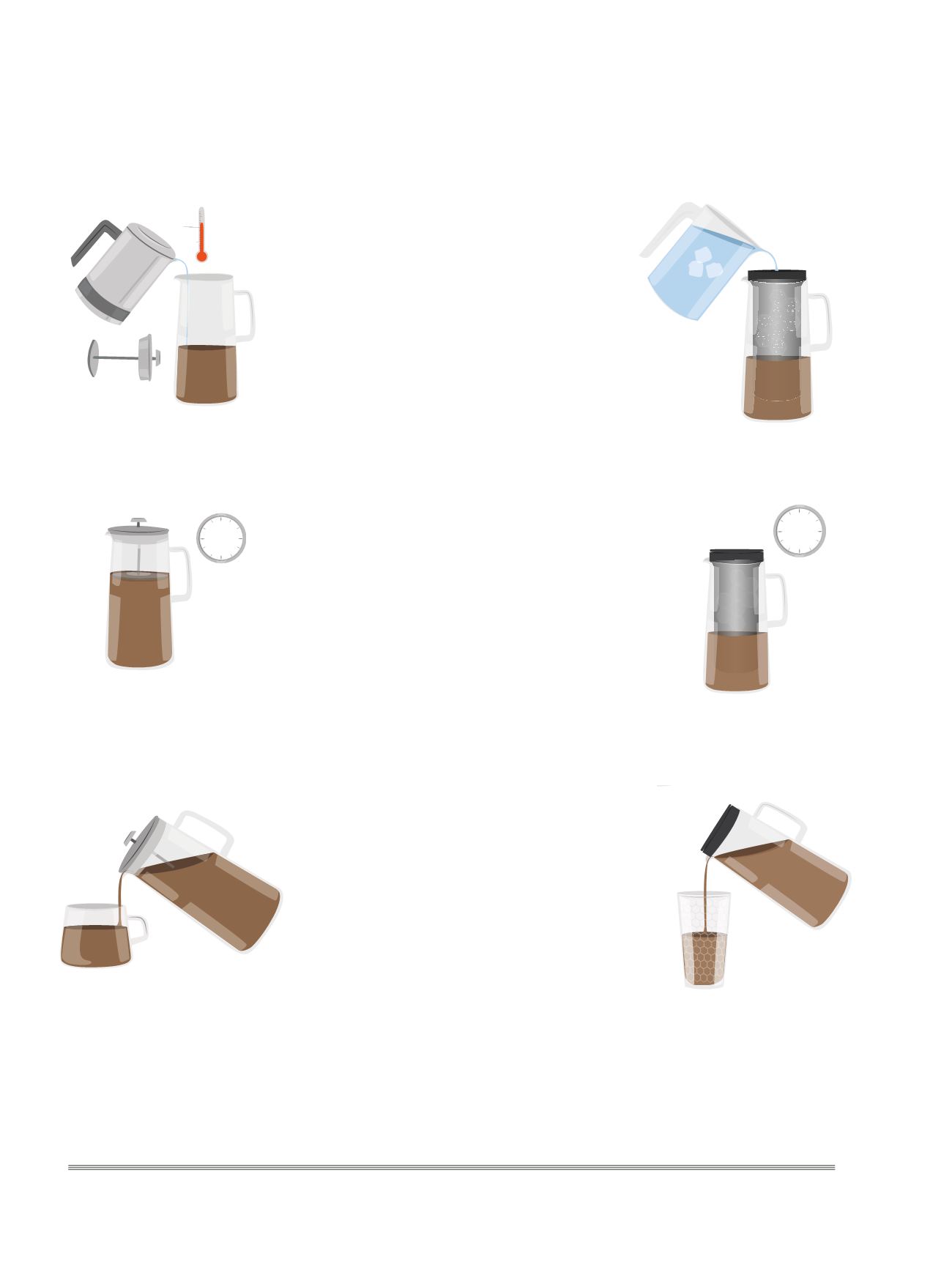

E N J OYME N T
BREW TIME!
Hot water is poured over this freshly
(and rather coarsely) ground coffee in
the French press.
COLD SHOWER
Cold water is poured over freshly
ground coffee – in a special pot with a
reusable filter, for example.
HASTE MAKES WASTE
The stirred coffee now releases many
nuanced flavours. Ideally, it has four
minutes. Then, the metal strainer is
slowly pushed to the bottom.
PATIENCE IS ALL
THAT’S NEEDED
The infusion then sits at room
temperature for eight to twelve hours.
SERVE AND ENJOY
The coffee grounds are kept in the
bottom part of the pot, allowing the
fats and oils present in the coffee
to end up in the coffee cup – unlike
when using filters.
SERVED ICE-COLD
The fresh cold brew tastes particularly
good when poured over ice cubes or
served with crushed ice.
“When brewing by hand, we can evenly extract the aromas
and other good flavours from the coffee. It is simple,
effective and makes a great cup of coffee,” confirms Annika
Taschinski, founder of elbgold Röstkaffee.
The two most common tools that baristas use are manual
filters (for pour overs) and the cafetière (French press). The
manual filter should have a funnel wall that is as steep as
possible – this increases water motion when the coffee
is prepared. Many baristas are very strict and even use a
stopwatch when pouring the precisely tempered water.
“Preparing coffee in a manual filter should take no longer
than three minutes. Otherwise the coffee becomes bitter,”
says Ms Taschinski. If bubbles form during the first “pour
over”, the beans are fresh. In this case, the coffee is not
drunk hot, but warm or lukewarm instead.
A LONG BREWING TIME FOR MORE FLAVOUR
Measuring, weighing and timing also play an important role
in the French press. The main difference from the manual
filter is that the coffee grounds are somewhat coarser. In
glass French presses, initially half the water is poured over
the coffee grounds, stirred and then mixed with the rest
of the water. The strainer is pushed down only to the edge
of the water to begin with to keep the grounds just below
the surface. In the next few minutes (around four minutes
are recommended), exciting flavours and oils which give
the coffee a stronger and fuller taste are released from the
grounds. At the end, the strainer must be pushed all the
way down to keep the grounds at the bottom of the pot.
A third brewing method has become popular especially
in the United States and attracts coffee enthusiasts during
the summer: the cold brew. With this method, cold water is
poured over the freshly ground beans and left to sit at room
temperature for eight to twelve hours. The coffee is then
filtered and optionally served with ice cubes, water, cold
milk, cream or sugar. Cold-brewed coffee contains far less
caffeine and is less acidic and bitter, making it much more
palatable. The long brewing time can release twice as many
aromas as hot brewing – including fruits, spices, licorice,
vanilla or redcurrants.
All three brewing methods can be easily used at home
too with the right accessories. Cappuccino lovers will be
amazed at how pleasant and complex a black Rwandan or
Ethiopian coffee brewed freshly by hand can taste – even
without a stopwatch.
•
French press
Cold brew
75
Grad
8–12
hours
8–12
hours
4
minutes
Dish
by WMF
|
82
















